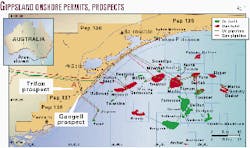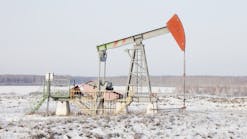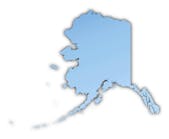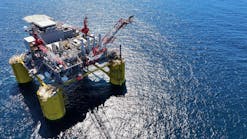A small Melbourne independent hopes to extend Gippsland basin production onshore in southeastern Australia.
Discoveries in the Bass Strait put Gippsland on the map in the 1960s. Now Lakes Oil NL holds a 100% interest in about 7,000 sq km that comprises nearly the entire onshore portion of Gippsland.
Lakes Oil acquired the rights to four blocks in 1995. It acquired 31 km of seismic data, mostly around the town of Yarram on PEP 138 and over the North Seaspray structure on PEP 137.
It initially chased gas in the Tertiary Latrobe Group but found it to be wet in most onshore wells.
Lakes Oil drilled one well, a noncommercial 150 Mcfd gas discovery at North Seaspray-3, in June 2000. TD is 1,170 m. Minimum commercial rate is about 500 Mcfd, Lakes Oil reckons.
That well tested gas from the Early Cretaceous Strzelecki and Late Cretaceous Golden Beach sands slightly deeper than Latrobe.
The company has reviewed all existing seismic data over its permits. The aim was to identify alluvial fans in the Strzelecki and Golden Beach formations. The fans are similar in style to that in Kipper field about 120 km southeast of Lakes Entrance.
Lakes Oil has two more locations ready to drill and hopes to spud the first one this month.
The company is firmly committed to drill the Trifon prospect to 1,500 m; a second well to 1,800 m on the Gangell prospect may be contingent on results of Trifon-1, said Lakes Oil Chairman Robert Annells.
The prospects in Victoria State are near gas pipelines and the Longford gas processing plant.





